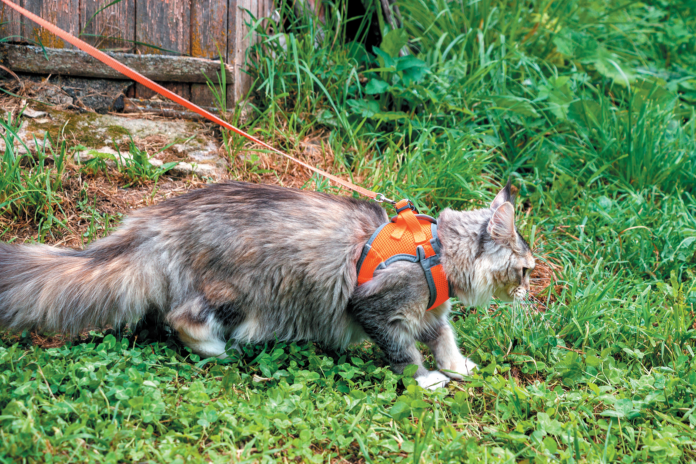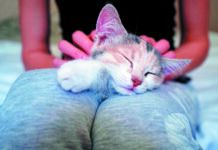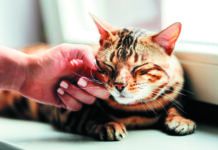Until about 1950, pet cats were strictly outdoor pets or a combination of indoor/outdoor. But the development of cat litter in 1947 and the desire to keep cats safe led many veterinary organizations to recommend that cats be kept exclusively indoors. The American Association of Feline Practitioners (AAFP) sees it differently.
“Indoor/outdoor living for cats in an environment that is safe is the best option for pet cats,” the organization says. It points out that the cat is a relatively young species, coming tens of thousands of years after the dog, and thus has very much retained the behaviors and instincts of its ancestors that lived in the wild. A cat also lives a better life when able to express those instincts outside.
The AAFP concedes that making a cat live indoors her entire life makes it easier to reduce the incidence of injury and potentially increase longevity. But it says that “a lifestyle choice made with the sole intention of increasing longevity — but in an impoverished environment…is not in the cat’s best interest.” It can lead to boredom, stress-associated diseases including cystitis and colitis, and behavioral problems such as urine marking. That is, an entirely indoor life can make a cat unwell in addition to unhappy. Allowing a cat some outdoor time, on the other hand, provides a number of benefits. These include
- Improvement of emotional health.
- Improved physical health.
- Reduced risk of stress-related behavior problems.
- Increased activity and exercise (and therefore a lower risk for obesity).
- Ability to create distance from other cats in the household.
- Increased ability to mark, either with urine, by scratching, or with the cheeks.
The great outdoors, safely
By allowing your cat access to the outdoors, AAFP doesn’t mean opening the back door and hoping your pet doesn’t get hit by a car while crossing the street or attacked by a larger animal. Access to fresh air should be very circumscribed. The organization recommends such options as walking your cat on a leash, building an outdoor enclosure like a catio, or putting a fence around your property. These steps offer the best of both worlds: allowing your cat access to the “great outdoors” while reducing the risk of injury. They also reduce the risk of accidental poisonings, abuse by other people, exposure to infectious and parasitic agents, and hazardous weather conditions, including not just storms but also extreme heat and cold.
Of course, these options are not available to everyone. Many people don’t live in houses so don’t have a yard to fence in and don’t have the land to build a catio. They may also have mobility issues that would make it hard to walk a cat on a leash. And some cats won’t take to a leash, even if you try to adjust them gradually. In such cases, complete indoor living becomes the only option. The AAFP says that can work. Owners just have to be diligent about addressing their cats’ behavioral needs so their pets’ emotional wellbeing remains intact.
With that in mind, the AAFP says it is very important for a pet cat to have vertical space to climb to and perch on. It also calls the ability to forage and hunt “essential.” That means cats would do well not to have all their food put in bowls right in front of them but to have to search for some of it and work to retrieve it from food puzzles. (See examples of recommended food puzzles in the September 2021 issue of Catnip.) Games that involve a cat’s stalking and pouncing on “prey” are important, too. Training a cat to interact by teaching her tricks will also help allay boredom and keep the feline mind stimulated.
Even the most dedicated owner will not be able to tend to all of a cat’s instincts by keeping her entirely indoors, especially if there is more than one cat in the house. A cat’s need to carve out her own territory and have alone time can only be met to a certain degree with an indoor lifestyle. But it is the responsibility of every cat owner to do what she can to let her pet live her life as naturally as possible. Cats are not ornaments — there just to be pretty and admired by people. Their requirements for a life more fully lived require a greater commitment.





Is there a way for a cat rescue that prepares kittens/cats for adoption can get copies of the pamphlet “Happy Cat, Happy You”? We would love to include it in the packets that we hand out to adopters.
we are fortunate to live in a very rural area. My kitty roams free in our large yard. She rarely wanders from there. We love watching her chase leaves, bugs, and catch the odd mole or mouse. She made friends with the cat next door ( they are 3 weeks apart in age) and they play “tag” for hours. She is a happy girl.